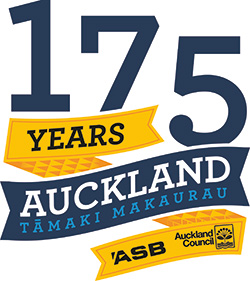Auckland's 175th birthday is being celebrated in style at Anniversary Weekend on January 24-26. At the formation in 1840 of what was to become New Zealand's biggest city, a small seaside party took place - but thousands are expected this month to attend a multimedia event at Queens Wharf and
Father of Auckland needed bail-out
Subscribe to listen
Scottish doctor Sir John Logan Campbell, as painted by artist Louis John Steele. Picture / Auckland Art Gallery Toi o Tamaki
He made an enormous amount of money from, among other things, what became Lion Breweries and was a renowned philanthropist. He also profited from his business exploits in shipping, timber, flax, kauri gum and manganese.
He gave a lot of those profits away; the list of charities, societies and Auckland institutions he supported is almost endless. Perhaps his most visible legacy today is still Cornwall Park and its neighbouring landmark, One Tree Hill, which Campbell loved and on which he is buried with an entirely suitable epitaph: "If you seek his monument, look around" - a reference to the panoramic view of Auckland from the summit.
But it would all have turned to nothing had it not been for the bank he had helped into existence in 1847; a growing Auckland needed the security of a bank for those working men, families, farmers and businesses starting to establish themselves.
Campbell became the first secretary and, in the humblest of beginnings, the bank had a constitution and trustees but no premises and no deposits. It didn't even have a safe - Campbell had to buy one which took five months to arrive from Sydney. On June 5, 1847, the ASB opened for business in a brick store where the facade of the old Bank of New Zealand stands in Queen St today.
Auckland boomed during the 1860s and 1870s but the second half of the 1880s saw many companies struggle. The Northern Steamship Company revealed a heavy loss in 1885, sending shockwaves through the business community; bankruptcies occurred at an alarming rate.
There was a 10-year slump, people were out of work and homeless, Auckland's population dropped by about 5000 and leading businessmen went to the wall. Even Campbell, supposed to be the wealthiest man in Auckland, found the going tough. He faced high levels of debt and had to borrow £15,000 from the ASB. It doesn't sound like much but in today's money that would amount to nearly $3 million.
Campbell dismissed gardeners and servants from his Parnell home and claimed to live on an income less than his head clerk.
The bank itself had a rocky time - in 1893 it endured a run on deposits as a rumour of bad investments saw panicked customers withdraw £41,000 in a day.
The bank recovered quickly as did Campbell, who went on to become a considerable benefactor to a city that became his heart and soul.
It was a far cry from his confidence to his father in 1847 that his ambitions were ... "to make money enough to travel through the world - one grand long tour extending over three years to see and mingle with every nation and country; and then on settling down for life there is food for the mind and reminiscences to dwell upon".
Campbell gave Auckland plenty to dwell upon - but it was a near thing.
